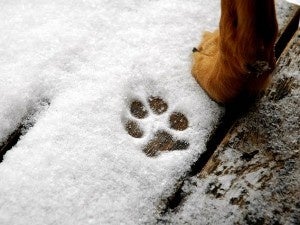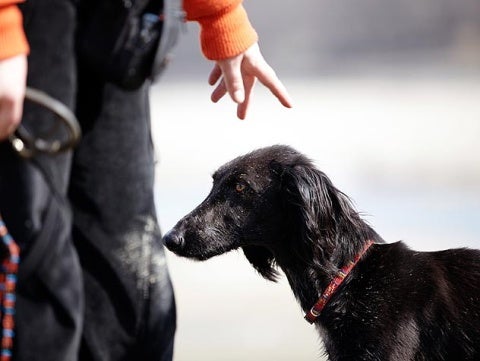Dogue de Bordeaux
Despite their fancy-sounding name, the Dogue de Bordeaux is a working dog that has a long history protecting cattle and humans. Closely related to Mastiffs, they have massive heads and powerful, athletic bodies. A serious expression is at odds with the dog’s lovable, gentle giant personality. They tend to bond strongly with one owner and can be sensitive.
Breed characteristics carousel
Learn More
Need to Know
- Dogs suitable for experienced owners
- Extra training required
- Potential health risks
- Enjoys active walks
- Large dog
- Some drool
- Requires frequent grooming
- Chatty and vocal dog
- Barks, alerts, and may be physically protective/suspicious of visitors
- Could have issues with unknown dogs but gets along with known dogs
- May need additional training to live with other pets
- May need additional supervision to live with children
- Needs a large yard, either in suburban or rural areas
- Can be left alone occasionally with training
- AKC Registered Breed

Personality
Devoted and loyal protectors, the Dogue de Bordeaux tend to stick close to one chosen owner. They are people pleasers and sensitive, but they might not be terribly good at obedience unless they know they’ll get something out of it. Males are laidback unless provoked and they get along with most other pets.
The Dogue de Bordeaux’s origins are unclear; they could be from Mastiffs, Bulldogs, Tibetan Mastiffs, or even an extinct breed. The first historical note of the breed was in southern France in the 14th century. These dogs had cropped ears and were used to guard property and the aristocracy. During the French Revolution, many died with their owners.
The name Dogue de Bordeaux was first used in 1863 where it was distinguished from a Mastiff by light eyes and a red mask. Both World Wars contributed to a decline in the Dogue de Bordeaux breed; in the 1960s, there was an effort to revive the breed. The 1989 movie Turner and Hooch introduced the breed to the general American public.
Owners should have some knowledge of handling a large dog and plenty of patience for the Dogue de Bordeaux, which can be slow to mature. They drool, so owners will need to be OK with puddles here and there, and their sheer size means having large everything: houses, yards, cars, beds, and more. They do best with older children or child-free homes.
While large, Dogue de Bordeaux dogs don’t need as much exercise as one might expect from a breed this big. They do well with several short walks. They enjoy the outdoors and will love having a secure, fenced-in yard with plenty of shade. Too much exercise for a Dogue de Bordeaux puppy can cause joint and bone problems, so they should be carefully monitored when young.
A large dog like the Dogue de Bordeaux needs a large house and fenced-in yard to be comfortable.
A rubber grooming mitt can help to remove loose or dead hair from the Dogue de Bordeaux. Skin folds should be cleaned regularly to prevent infections.
Dogue de Bordeaux are large and strong dogs that will need to learn how to walk on a leash. Dogue de Bordeaux puppies will need to learn dog manners, good recall, and how to get along well with others through socialization. Socialization will be more important for them than obedience training. They wouldn’t have gotten straight A’s anyway.
Large and often clumsy, the Dogue de Bordeaux dog breed can be a good family dog for those who understand the dog’s limitations. Older children or no children are preferable. They can be aloof with strangers, so homes where there are a lot of visitors might not be a good fit.
The cost of a Dogue de Bordeaux from a breeder is significantly more than the cost of adopting one from a local shelter or rescue. The adoption fee usually covers additional items such as spaying or neutering, vaccines, and microchipping.

Learn more about feeding and caring for your Dogue de Bordeaux on Purina.
Did You Know?
- The Dogue de Bordeaux was made famous by the movie Turner and Hooch.
- Dogue de Bordeaux dogs are also known as French Mastiffs, Bordeaux Bulldogs, and Bordeaux Mastiffs.


